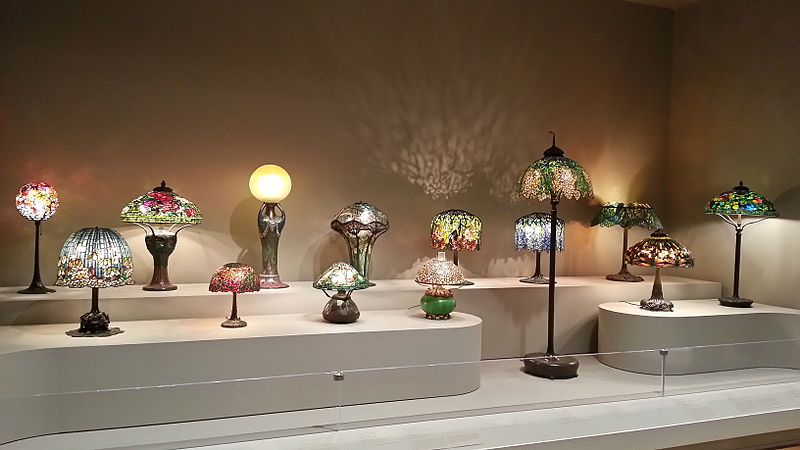
If money were no object, would you splurge over two million pounds on a designer lamp? Well somebody did. But was it worth it?....
At Pooky we bow to nobody when it comes to appreciating a lovely designer table lamp… except perhaps one person. That’s the unknown zillionaire who bought the lamp above at a Christie’s auction in New York, on 12 December 1997 for a cool $2.8 million. It’s the Pink Lotus, made by Tiffany Studios in 1906. It’s very nice and all…But why so expensive? Well, the Pink Lotus has three things going for it: it’s unique, it has some historical significance, and it’s beautiful. But do those three things really add up to $2.8m? Here’s the evidence…
The Pink Lotus lamp. Image credit.
First, it is undoubtedly a one-off. The lamp was specially commissioned by the Wrigley family – the Chicago chewing gum magnates – in 1905. They liked collecting nice things (skyscrapers, baseball parks, ocean liners and so on) so a custom-made lamp didn’t make too big a dent in the finances. However, objects from New York’s Tiffany Studios were pretty expensive even at the time. In the 1900s a Tiffany glass lamp could set you back over $700 – roughly the annual income of an average worker. Which brings us to the historical significance.
Louis Comfort Tiffany (1848-1943), pictured above, is probably the most famous American exponent of Art Nouveau design. The eldest son of Charles Lewis Tiffany (founder of the Tiffany & Co store of Breakfast at Tiffany’s fame), he occupied an interesting niche at the intersection of art and big business. He was certainly an artist – creating all manner astounding works in stained glass – but he was also an expert marketer of his own products, particularly the glass lamps. Tiffany lamps were – and are – renowned for their intricate artistry and for the innovative ‘copper foil’ technique, which involved edging individual pieces of cut glass in copper foil and soldering the whole together to create extremely detailed pieces. The patterns, inspired by the Arts & Crafts and the French Art Nouveau movements, are distinctive and gorgeous.
Collection of Tiffany Lamps from the Virginia Museum of Fine Arts. Photo credit.
But perhaps where Louis Comfort was most clever was in his choice of employees. Foremost amongst these was one Clara Driscoll, whom he made director of the Tiffany Studios' Women's Glass Cutting Department (aka the ‘Tiffany Girls’).
Clara Driscoll in a workroom with Joseph Briggs, another Tiffany employee (1901). Image credit.
Although little was known about her until fairly recently, it seems that it was Clara, rather than Louis, who was the real creative force behind the most well-known Tiffany lamps: the chief designer and crafter of more than thirty Tiffany lamps including the Wisteria, Dragonfly and Daffodil. And, very probably, the Pink Lotus too. The mosaic shade pattern, formed of eight lotus flowers, was created from some 2,000 individually hand-crafted glass pieces soldered together using the copper foil method. It has a bronze base, a height of 34 inches and a diameter of 28 inches, and features twelve lights and no less than eight of Tiffany’s patented Favrile glass globes. It is, without doubt, a stunningly beautiful object and by far the most expensive table lamp ever sold (second place is another Tiffany lamp – the Wisteria, sold for a mere $1.5m in 2010).
Was it worth that much? Well, take one of our most expensive designer table lamps at Pooky: the Wellington (above) – a whopping 52cm column made from solid brass in a bronze finish. At £235 it’s approximately 1/10,000 of the cost of the Pink Lotus. Is it a ten thousandth as beautiful? Depends on your taste of course, so you can decide that for yourself, but it does have one major advantage over the Tiffany one – you can actually use it as a table lamp without having a heart attack every time someone walks past it.
At Pooky we know everything there is to know about lighting - check out our range of affordable designer table lamps here.















